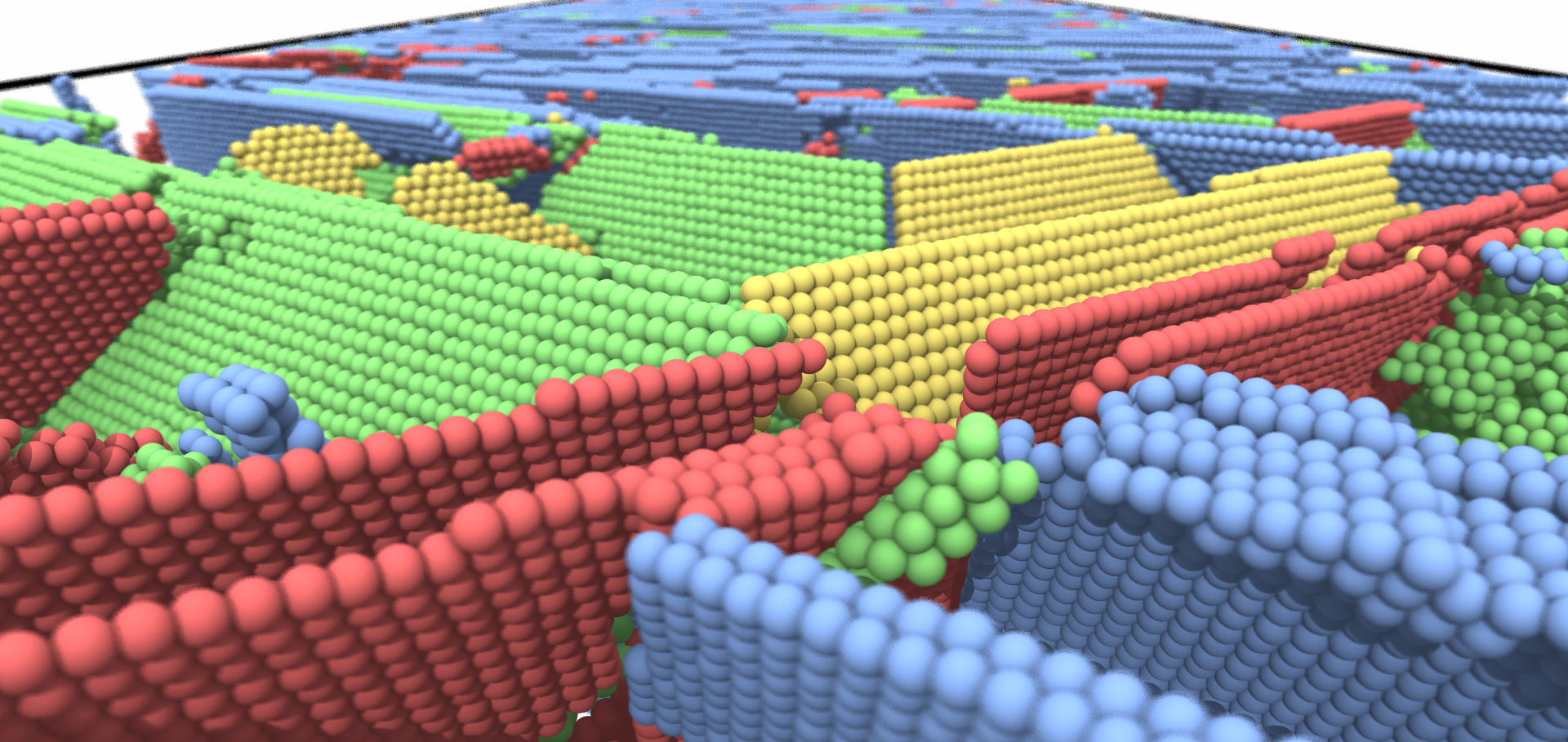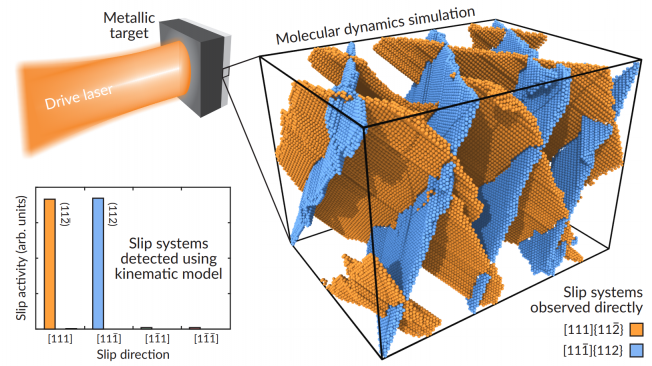Recovery of a high-pressure phase formed under laser-driven compression
Physical Review B American Physical Society (APS) 102:2 (2020) 24101
Molecular dynamics simulations of grain interactions in shock-compressed highly textured columnar nanocrystals
Physical Review Materials American Physical Society 3:8 (2019) 083602
Abstract:
While experimental and computational studies abound demonstrating the diverse range of phenomena caused by grain interactions under quasistatic loading conditions, far less attention has been given to these interactions under the comparatively dramatic conditions of shock compression. The consideration of grain interactions is essential within the context of contemporary shock-compression experiments that exploit the distinctive x-ray diffraction patterns of highly textured (and therefore strongly anisotropic) targets in order to interrogate local structural evolution. We present here a study of grain interaction effects in shock-compressed, body-centered cubic tantalum nanocrystals characterized by a columnar geometry and a strong fiber texture using large-scale molecular dynamics simulations. Our study reveals that contiguous grains deform cooperatively in directions perpendicular to the shock, driven by the gigapascal-scale stress gradients induced over their boundaries by the uniaxial compression, and in so doing are able to reach a state of reduced transverse shear stress. We compare the extent of this relaxation for two different columnar geometries (distinguished by their square or hexagonal cross-sections), and quantify the attendant change in the transverse elastic strains. We further show that cooperative deformation is able to replace ordinary plastic deformation mechanisms at lower shock pressures, and, under certain conditions, activate new mechanisms at higher pressures.Femtosecond x-ray diffraction studies of the reversal of the microstructural effects of plastic deformation during shock release of tantalum
Physical Review Letters American Physical Society 120:26 (2018) 265502
Abstract:
We have used femtosecond x-ray diffraction to study laser-shocked fiber-textured polycrystalline tantalum targets as the 37–253 GPa shock waves break out from the free surface. We extract the time and depth-dependent strain profiles within the Ta target as the rarefaction wave travels back into the bulk of the sample. In agreement with molecular dynamics simulations, the lattice rotation and the twins that are formed under shock compression are observed to be almost fully eliminated by the rarefaction process.Diffuse scattering from dynamically compressed single-crystal zirconium following the pressure-induced alpha-to-omega phase transition
Physical Review B: Condensed Matter and Materials Physics American Physical Society



